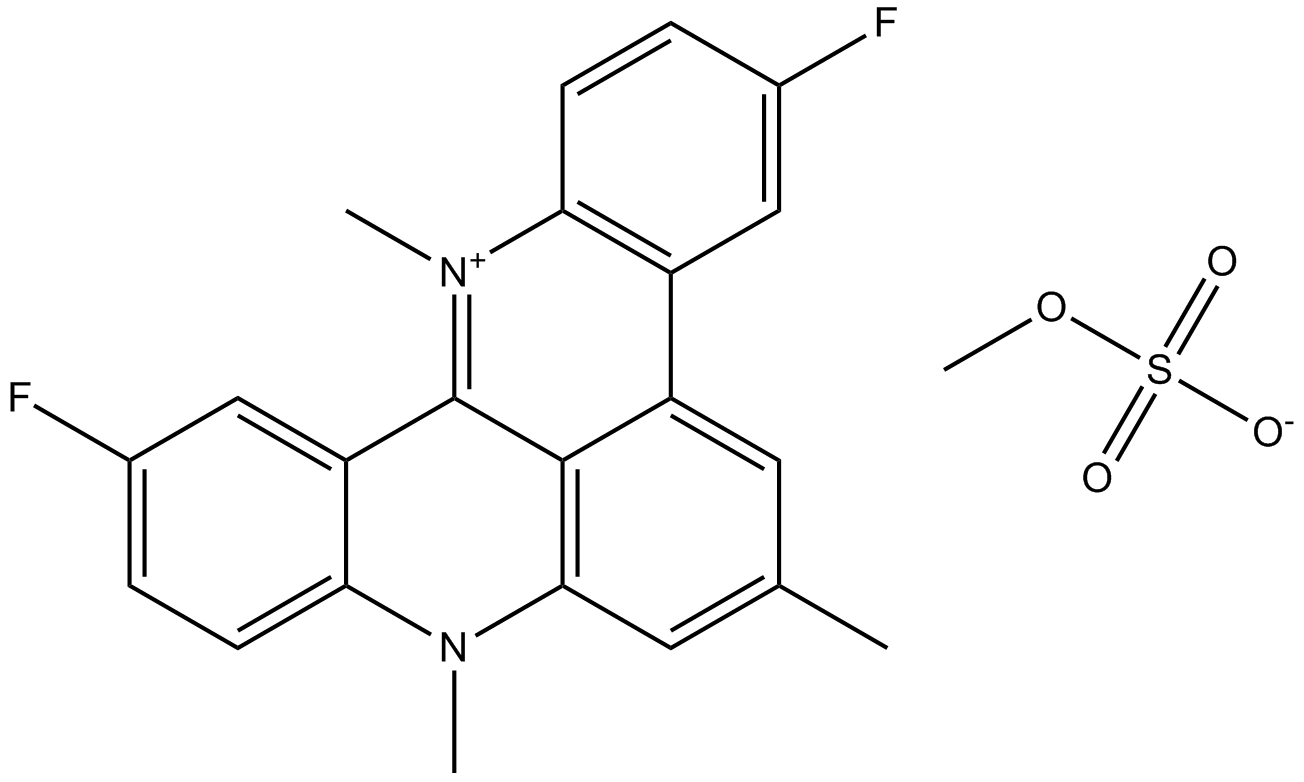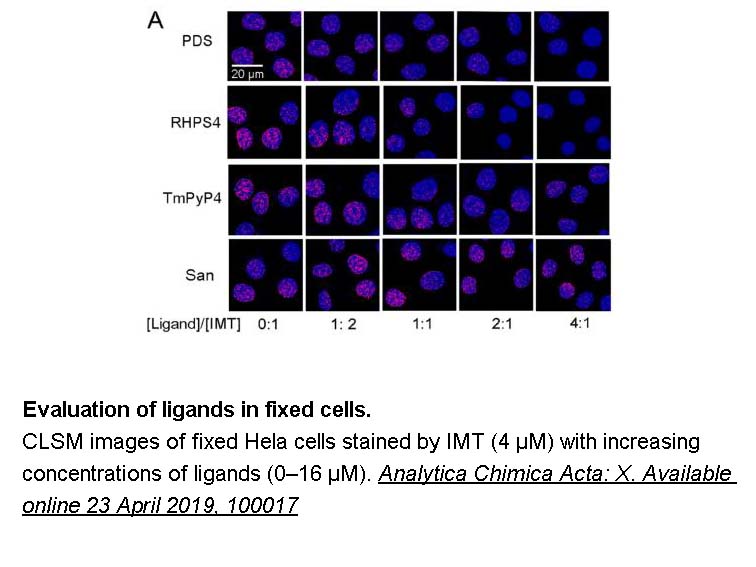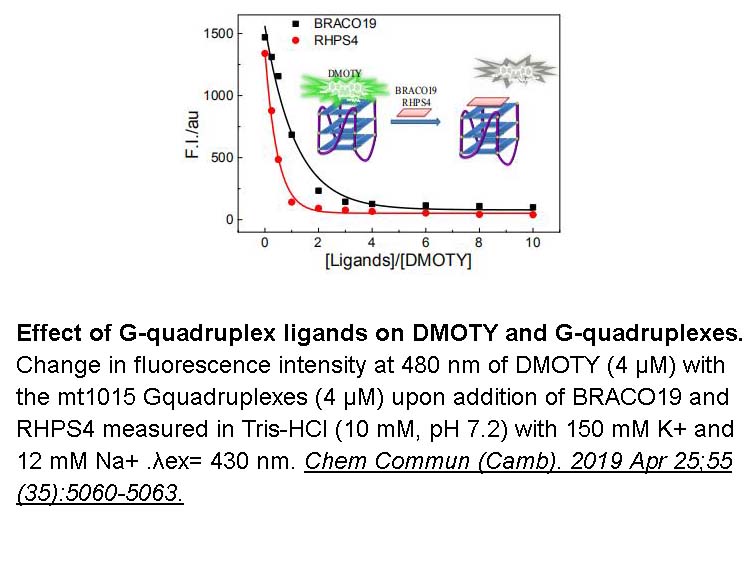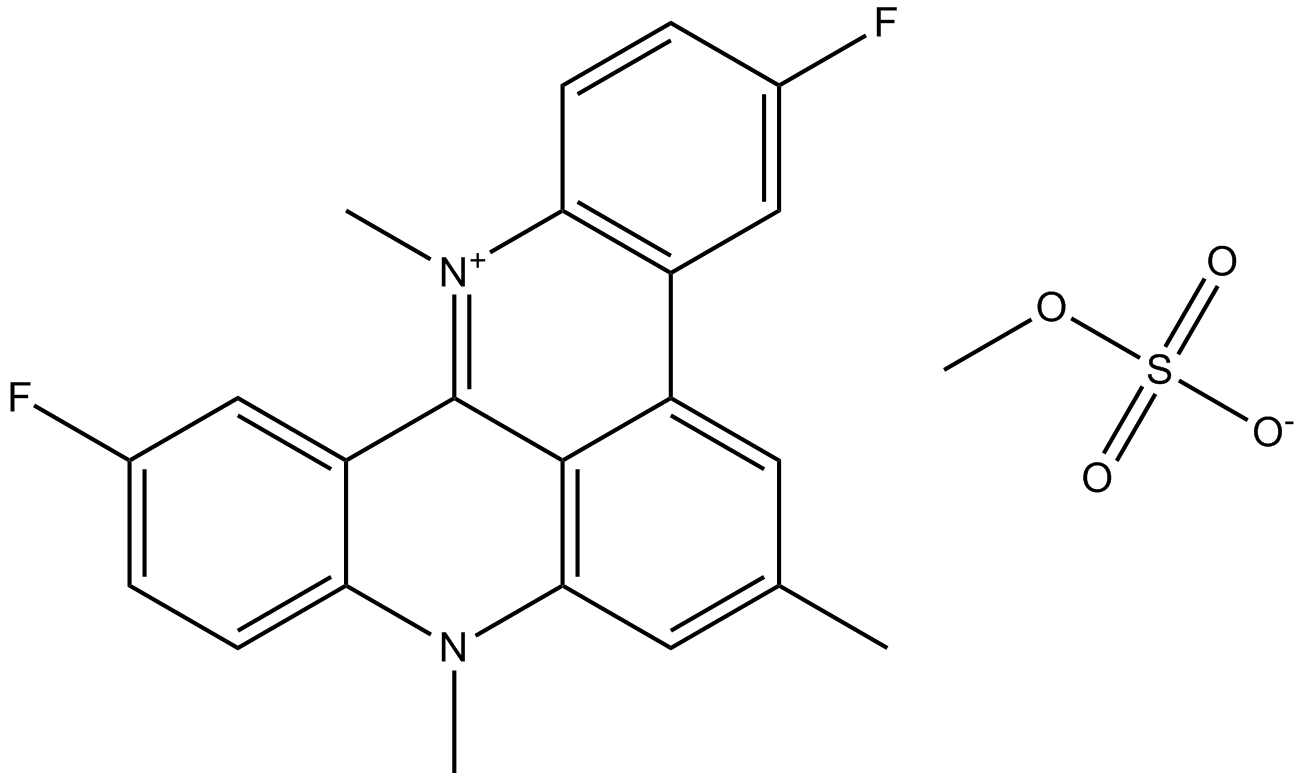RHPS4
IC50: ~3 μM for M14 cells in 5-day growth inhibition assay
RHPS4 is a telomerase inhibitor.
The protection of chromosome termini, degradation and recombination is regulated by the telomeres. A recent model proposes that telomeres can form a cap at the chromosome end. Thus, the telomere cap integrity should be intact to allow cell division to proceed.
In vitro: It was found that the treatment RHPS4 to UXF1138L cells led to the displacement of the telomerase catalytic subunit (hTERT) from the nucleus, induction of telomere-initiated DNA-damage signalling as well as chromosome fusions. It was further reported that RHPS4 was more potent over cancer cells growing as colonies than cells growing as monolayers. In addition, the forming units of human cord blood and HEK293T embryonic kidney cell colony were more resistant to RHPS4 [1].
In vivo: Animal study found that, compared with controls, RHPS4-treated UXF1138L xenografts had a decreased clonogenicity, loss of nuclear hTERT expression and an induction of mitotic abnormalities. Though RHPS4 alone showed limited in vivo efficacy, a combination treatment with the mitotic spindle poison Taxol resulted in tumour remissions and further enhancement of telomere dysfunction [1].
Clinical trial: Up to now, RHPS4 is still in the preclinical development stage.
Reference:
[1] Phatak P, Cookson JC,Dai F,Smith V,Gartenhaus RB,Stevens MF,Burger AM. Telomere uncapping by the G-quadruplex ligand RHPS4 inhibits clonogenic tumour cell growth in vitro and in vivo consistent with a cancer stem cell targeting mechanism. Br J Cancer.2007 Apr 23;96(8):1223-33.
- 1. Boyang Zhang, Ranran Sun, et al. "G-quadruplex in mitochondria as a possible biomarker for mitophagy detection." Int J Biol Macromol. 2024 Feb;259(Pt 2):129337. PMID: 38218296
- 2. Chen H, Sun H, et al. "Monitoring autophagy in live cells with a fluorescent light-up probe for G-quadruplex structures." Chem Commun (Camb). 2019 Apr 25;55(35):5060-5063. PMID:30907894
- 3. SugeZhang, HongxiaSun, et al. "Evaluation of the selectivity of G-quadruplex ligands in living cells with a small molecule fluorescent probe." Analytica Chimica Acta: X. Available online 23 April 2019, 100017.
| Physical Appearance | A solid |
| Storage | Store at -20°C |
| M.Wt | 458.48 |
| Cas No. | 390362-78-4 |
| Formula | C23H20F2N2O4S |
| Solubility | insoluble in EtOH; ≥10.54 mg/mL in DMSO; ≥2.51 mg/mL in H2O with ultrasonic |
| Chemical Name | 3,11-difluoro-6,8,13-trimethyl-8H-quinolino[4,3,2-kl]acridin-13-ium methyl sulfate |
| SDF | Download SDF |
| Canonical SMILES | Cc(cc1N(C)c(cc2)c3cc2F)cc2c1c-3[n+](C)c(cc1)c2cc1F.COS([O-])(=O)=O |
| Shipping Condition | Small Molecules with Blue Ice, Modified Nucleotides with Dry Ice. |
| General tips | We do not recommend long-term storage for the solution, please use it up soon. |
Quality Control & MSDS
- View current batch:
Chemical structure

Related Biological Data

Related Biological Data









